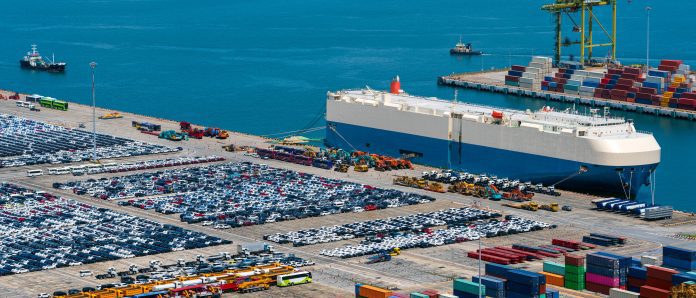In the wake of President Donald Trump’s tariffs, the volume of auto parts and finished vehicles shipped to the U.S. has declined. According to the trade database Descartes Datamyne, the maritime import volume of auto parts and accessories decreased 14.7% year-over-year, representing a decline of 119,100 metric tons. Finished vehicle shipments also declined by 8.9% from the previous year, to roughly 52,911 metric tons, equivalent to approximately 26,000 vehicles.
These declines suggest that automakers are opting to hold inventory offshore rather than paying the 25% duty on imported autos and parts. Most are likely delaying shipments, hoping for policy changes that could ease the cost burden and help manage supply chain expenses.
The maritime shipping data excludes overland imports from Canada and Mexico, but includes shipments from Europe and Asia, which are transported via roll-on/roll-off vessels and shipping containers. The information is based on Harmonized Tariff Schedule codes covering “parts and accessories for motor vehicles” and “motor cars and vehicles for transporting persons.”
For now, automakers are taking a wait-and-see approach, betting on potential policy amendments from the Trump administration.
Typically, automakers aim to maintain 60 days’ worth of inventory on dealer lots, with approximately 15 additional vehicles in transit. In April, the national average was 66 days’ supply — slightly below the industry’s 75-day target. While inventory levels are starting to dip below normal trends, most U.S. dealerships have plenty of cars in stock, including those imported before the auto tariffs were implemented. However, May and the coming months will likely see this supply number continue to decline as shipments slow.
Despite the 25% tariffs, average vehicle prices rose only by 2.5% in April. Dealers will likely increase prices gradually as they work their way through their pre-tariff inventory, avoiding sudden sticker shocks for buyers.



